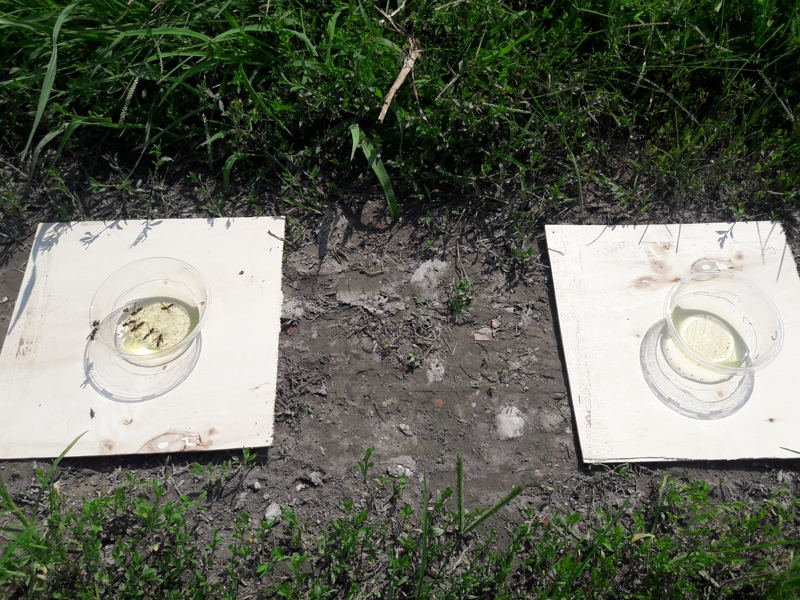When a test to define the efficacy of a biocide is designed, it is very important to have very clear the concept of “control”. Unfortunely the term “control” also means the action of keeping the population of a pest low enough to avoid nuisance or damage, which is defined “pest control”, and this can create further misunderstanding.
Anyway, talking about testing, the negative control (usually just called “control”) answers to the question: “what had happened if the test product was not applied?”. Infact, when we apply an insecticide or a repellent, we can observe and record what happens but if we do not have the control we do not know how many insects would naturally died or had moved away just for other reasons which are not related with the product we applied. The importance of the negative control is very dependant on the product, on the insect and on the test. If we evaluate the efficacy of an insecticide through a 60 minutes long forced contact test with the oriental cockroach, the importance of the negative control is limited because such insect would not naturally die in a so short time. Nevertheless if we run a 1 week long test using cloth moth adults, if we do not have the negative control it will be hard to say that all the moths died because of the product, as the natural mortality of such insect is very high.
The negative control is indispensable when a spatial repellent is tested because it is very easy to misunderstand what we observe. If we apply a spatial repellent in the garden and we observe a reducton of the biting respect the day before, if we do not have a control we do not know if this is because of a difference in the temperature, or in the humidity, if because of the wind or because the neighbour sprayed an adulticide.
Well, we are convinced that the control is necessary, but how should we realize it? First is the size, which has to be the same as the treated. The control replicates have to be identical in number and size as the treated ones. To be more precise treated and control replicates have to be identical, but the treatment.
OK, we have fixed another point, but what about the treatment? Is the control done identically the treated but the treatment? No, because how to do the control is depending of the species, of the test and of the purpose. For example, if we want to define the efficacy of a commercial insecticide forcing oriental cockroaches to stay in contact to a treated surface, we can set the control identically the treated, without the treatment. In the case we want to test an insecticide to directly spray indian meal moths, we should run the control spraying water, because wetting the insects can have an impact on the fitness of the moths, while we have to isolate the effect of the insecticide itself.
If we have to test the efficacy of a sticky trap activated with an attractant in reducing the infestation of a pest, the negative control will not have no trap, but if we want to test the efficacy of the chemical to attract the pest, the control will include an identical trap without the attractant.
In some case the control is not necessary/possible. This is the case when, for example, a field test against german cockroach is done. If we consider a flat in a building were an insecticidal bait is applied, because the flat can be considered an isolated environment with no relation with other flats even if in the same building, to set another flat in a different building or even in the same building, does not provide many informations. This is true especially for short term lenght test. The same is for a test in stable or in any other isolated condition.
We talked about the negative control, what about the positive control? This is a test were the control is treated with a product we know very well, normally a gold standard, a product we are sure it is effective. The positive control is opportune when we are following a new procedure, never used before, a procedure we just created. The design of a new procedure is never so easy because normally the insects behave differently than you planned. The positive control is necessary becasue it provides the confirmation that your protocol is a good protocol: if the insects do not die with a product you know be effective, the problem is in the procedure. Of course you also have to run the negative control because if all the insects die also in the negative control, it is clear that the procedure is wrong.
Another reason to perform the positive control is for strategic-commercial reasons, usually comparing with the main competitor in the market and define if the test product still needs improvement or if it is ready to fight with the reference in the market.
The choice of the testing procedure is depending of many aspects and it is important the tester is informed also on the purpose of the test. Do not underestimate it and give such information when you ask for a test.
Negative and positive control in the efficacy evaluation of PT18 and PT19




